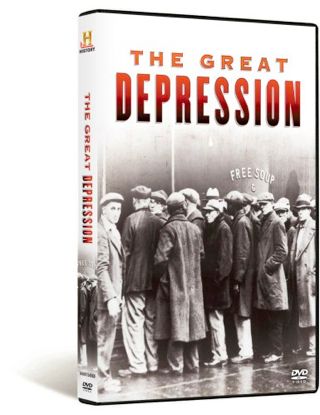Summary
Necessity, as the saying goes, is the mother of invention, and at no point has a cliché been so prescient as in the 1930s. During that era, Franklin Delano Roosevelt's New Deal took documentation to new heights in U.S. history, turning artists and artisans into government-sponsored vehicles for reportage and representation of both American ideals and the harsher set of realities citizens were dealing with. And this four-volume set, narrated by the instantly recognizable Mario Cuomo, leverages many of the Great Depression's own media-savvy documentary advances to tell the period's varied stories. Volume 1 covers the pre-New Deal era, as desperation hit farm hands and businesses and bank patrons, bringing the U.S. economy to its knees. Latter-day celebs chime in on the period, with James Michener's tales of his own rail-riding striking powerful bolts through the episode. Volume 2 spotlights the spotlight, the way mass media developed around themes of escape and promised lands--some rising from earlier historical eras--that somehow managed to both cornerstone pop culture "and" elude the vast majority of radio listeners and filmgoers. Here is the place where the era's media is so integral to this set, offering that great historical lifeblood: primary documents. Of course, not everyone bought the media meal, and the theme for Volume 3 is popular resistance. From the riots that infamously bookended the Harlem Renaissance to bank robber Pretty Boy Floyd, discontent was grounds for wide upheaval. Of great interest here is the worker-led organizing that so clearly lies in the vanguard of contemporary labor history. Finally, Volume 4, "Desperate Measures" centers on a trio of events: the "Battle of Washington," where President Herbert Hoover ordered the vaunted Douglas MacArthur to forcibly remove World War I veterans who had marched on the capital; the rise of Louisiana's firebrand populist Huey Long into the state governor's mansion; and the onset of World War II. By far the most comprehensive treatment of the period, this set is also exhaustively long, making it a delight for patient viewers--and educators. It's also painstakingly organized and produced and warrants repeated viewings. "--Andrew Bartlett"


